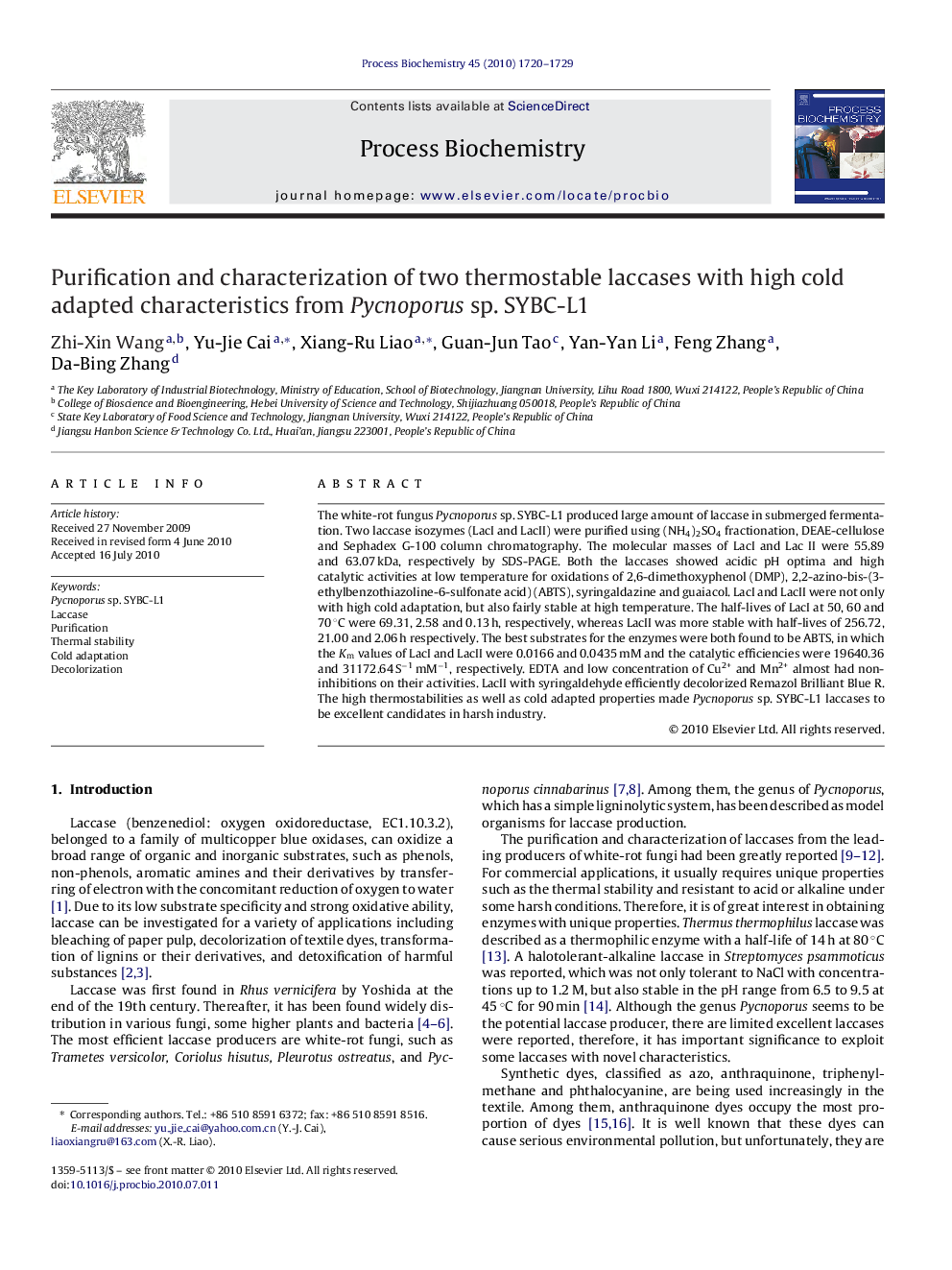| Article ID | Journal | Published Year | Pages | File Type |
|---|---|---|---|---|
| 35518 | Process Biochemistry | 2010 | 10 Pages |
The white-rot fungus Pycnoporus sp. SYBC-L1 produced large amount of laccase in submerged fermentation. Two laccase isozymes (LacI and LacII) were purified using (NH4)2SO4 fractionation, DEAE-cellulose and Sephadex G-100 column chromatography. The molecular masses of LacI and Lac II were 55.89 and 63.07 kDa, respectively by SDS-PAGE. Both the laccases showed acidic pH optima and high catalytic activities at low temperature for oxidations of 2,6-dimethoxyphenol (DMP), 2,2-azino-bis-(3-ethylbenzothiazoline-6-sulfonate acid) (ABTS), syringaldazine and guaiacol. LacI and LacII were not only with high cold adaptation, but also fairly stable at high temperature. The half-lives of LacI at 50, 60 and 70 °C were 69.31, 2.58 and 0.13 h, respectively, whereas LacII was more stable with half-lives of 256.72, 21.00 and 2.06 h respectively. The best substrates for the enzymes were both found to be ABTS, in which the Km values of LacI and LacII were 0.0166 and 0.0435 mM and the catalytic efficiencies were 19640.36 and 31172.64 S−1 mM−1, respectively. EDTA and low concentration of Cu2+ and Mn2+ almost had non-inhibitions on their activities. LacII with syringaldehyde efficiently decolorized Remazol Brilliant Blue R. The high thermostabilities as well as cold adapted properties made Pycnoporus sp. SYBC-L1 laccases to be excellent candidates in harsh industry.
